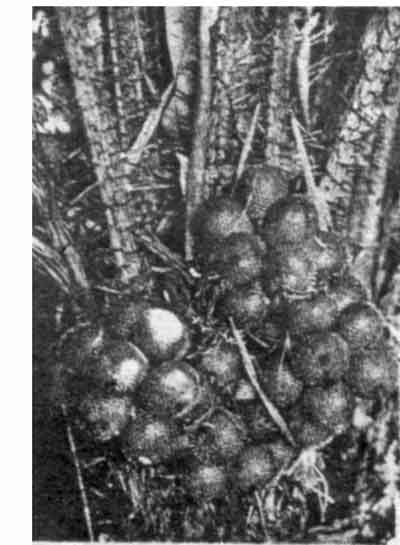
SALAK SUWARU
SCIENTIFIC NAME: Salacca edulis
FAMILY: Arecaceae
 In Northern Queensland, most tropical fruit growers are not aware that the so-revered Bali salak is not the only salak variety loved and consumed in Indonesia. The myth that the Bali salak is far superior than other varieties must be put straight.
In Northern Queensland, most tropical fruit growers are not aware that the so-revered Bali salak is not the only salak variety loved and consumed in Indonesia. The myth that the Bali salak is far superior than other varieties must be put straight.
At a salak and nangka (jakfruit) contest in 1990, which was held in Malang, East Java, the salak Suwaru was proclaimed Indonesia's best fruit, leaving the other salak varieties far behind.
The popular Sewaru salak has been developed from trees which were growing in the Pasar Minggu district near Jakarta. This area has grown salaks for more than a century without noticeable improvements of the fruit.
Seedlings from the Pasar Minggu variety were planted in the desa (small village) Bululawang in East Java. The different climate and soil probably caused the much-sought-after improvements of the fruit. Further propagation again led to even better varieties.
After careful selection, one of these seedlings was planted in the desa Suwaru, near Malang, East Java, which finally produced the now famous salak Sewaru.
The horticultural section of Primary Industries in Malang has since tried to find more new varieties of the Suwaru salak and some popular varieties are Dody, Sari and Damang.
The main features are:
Dody
This variety has the biggest fruit and it weighs from 140-180 grams or 6-7 in a kilogram. Flesh thickness is 7-15 mm, gold-yellowish in colour and juicy. It consist of three parts, each with a small seed and little aroma and rather sweet tasting. Colour of the skin is light brown. Production is low, only 8-14 fruits per bunch, and not many bunches are produced per season.
Sari
This variety is the best producer of the three. The fruit size is average and weighs 70-100 grams. The bunches, normally 3-4 per season, bear up to 35 fruits each. The flesh is 3-13 mm thick, of a white-yellowish colour and crisp, and has a strong fragrance. The seeds are very small. The skin is much darker brown than Dody.
Sari has been used to develop more varieties of the Suwaru strain of which SII, SIll, SIV and SX (Code names) look very promising.
Damang
The characteristics of Damang are quite similar to Sari, though the colour of the flesh is of a very dark yellow. Between 10-16 fruits go in one kilogram. The three parts are not so regular in size, with often 2 big parts and 1 small one. The flesh is 5-12 mm thick and not so crisp as Sari.
DATE: May 1994
* * * * * * * * * * * * *
